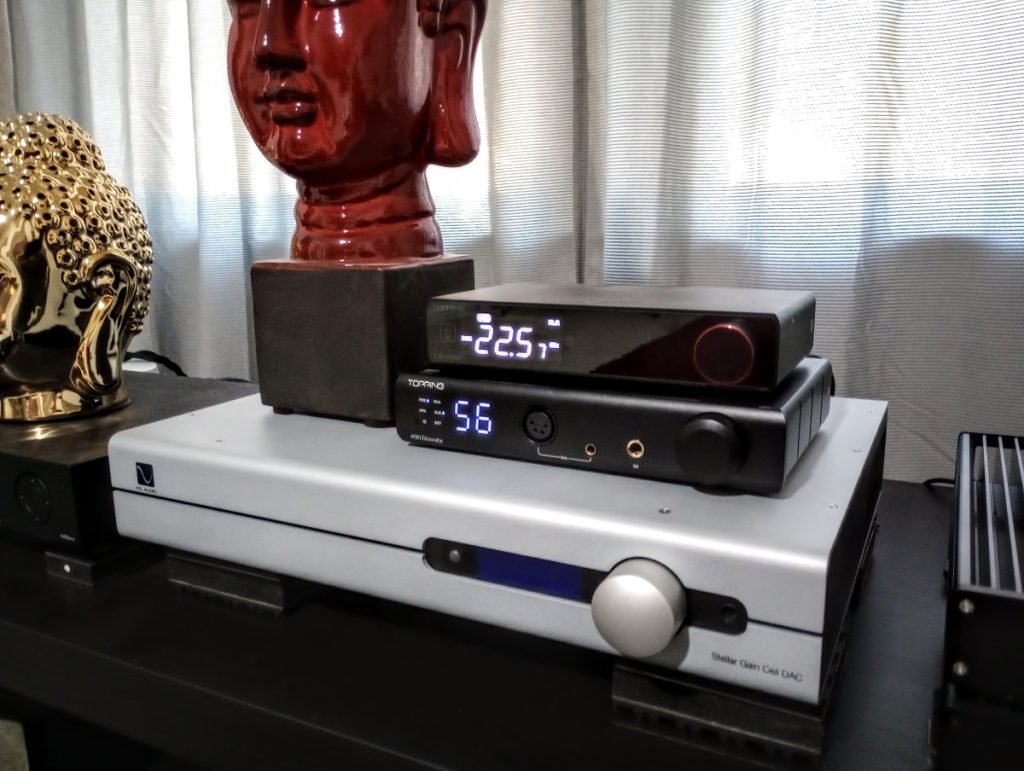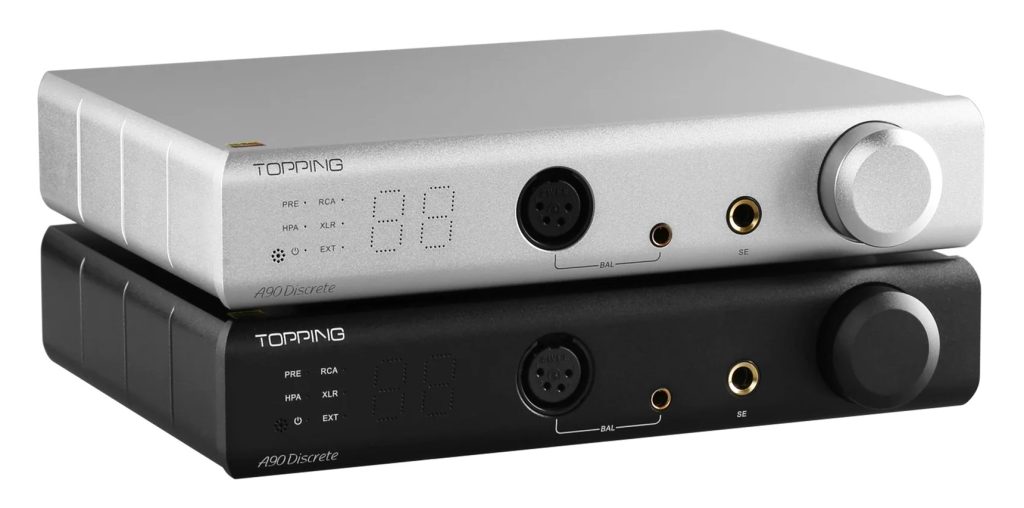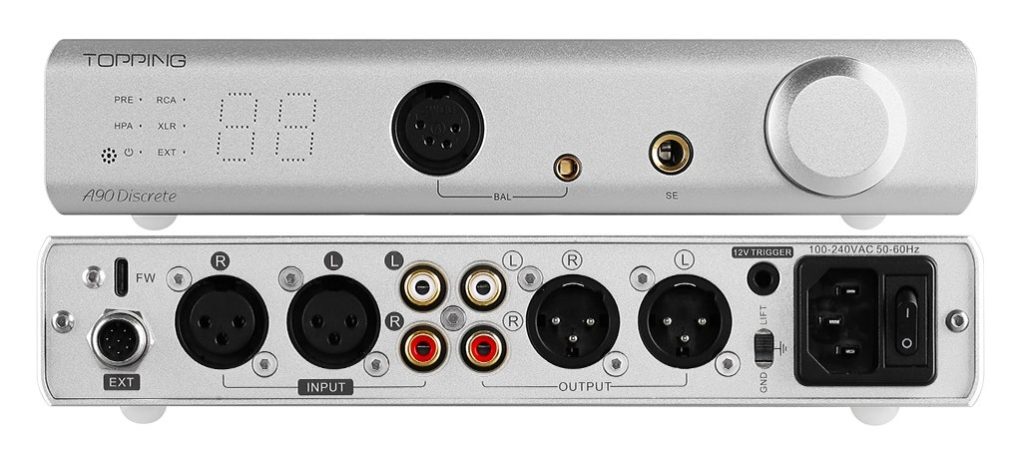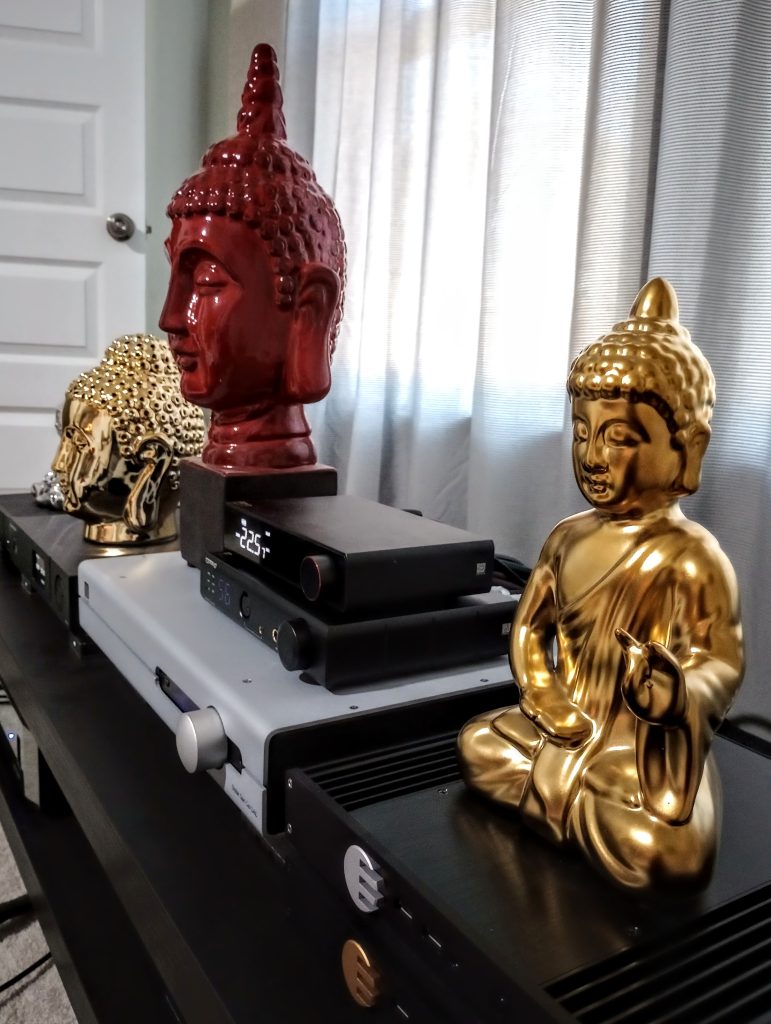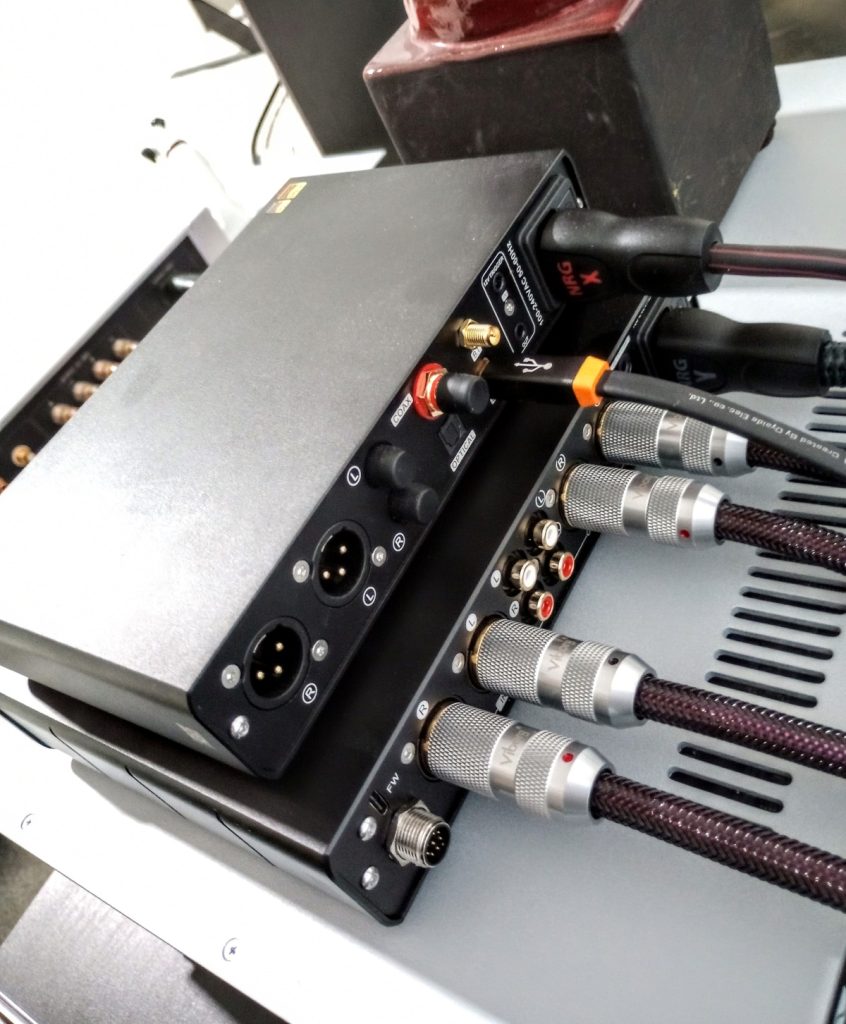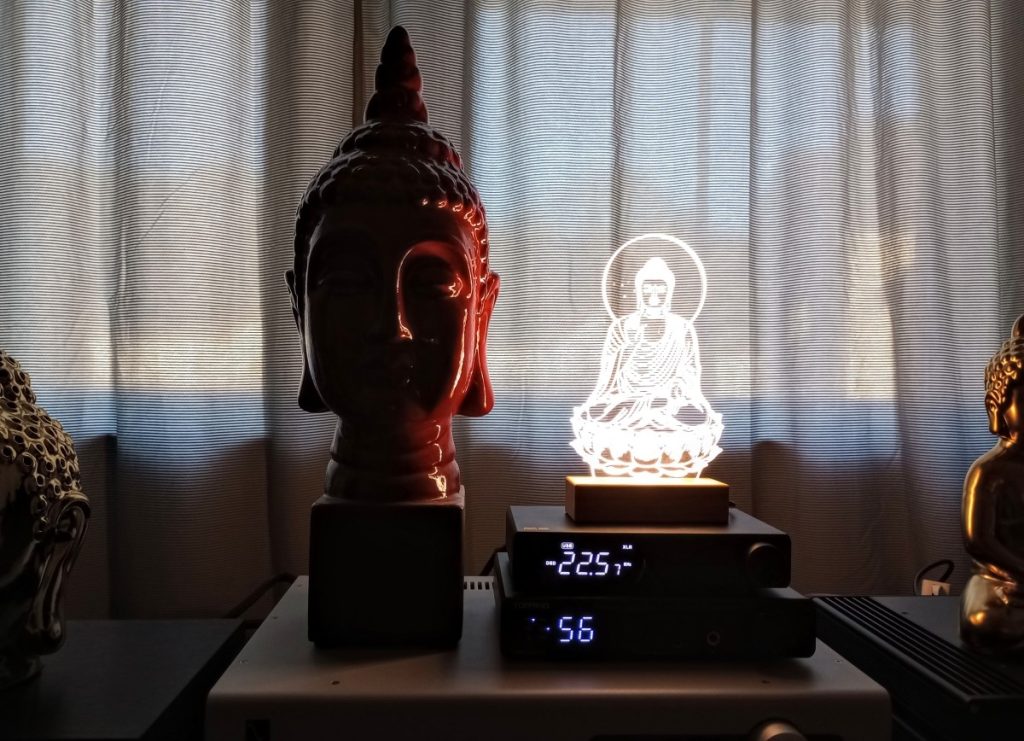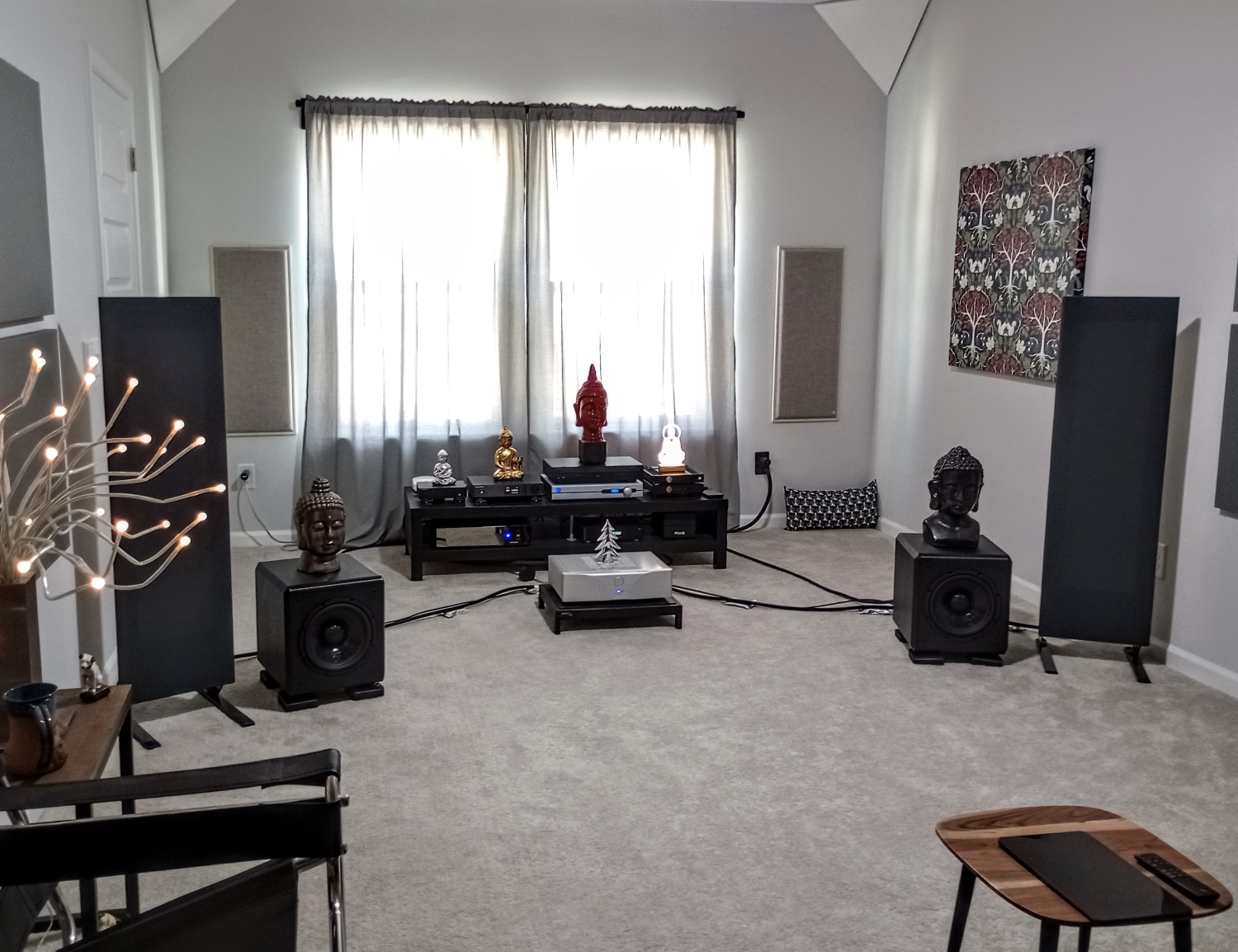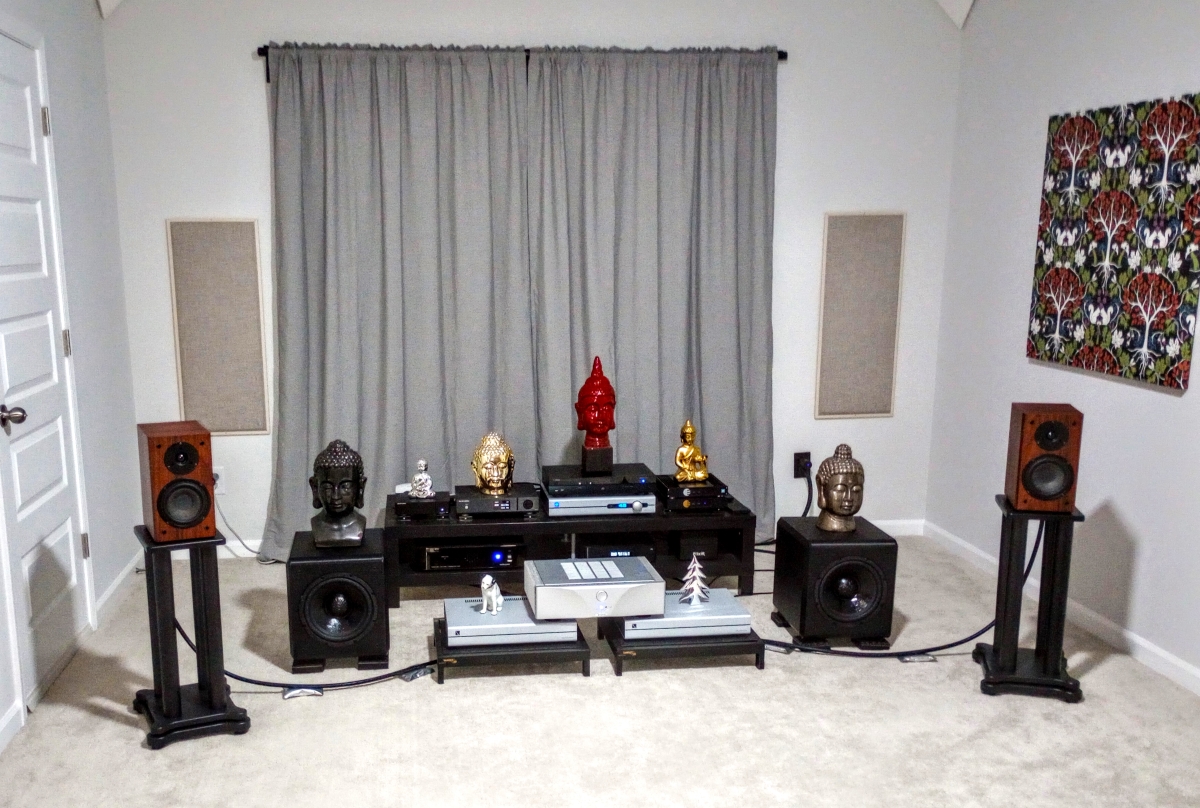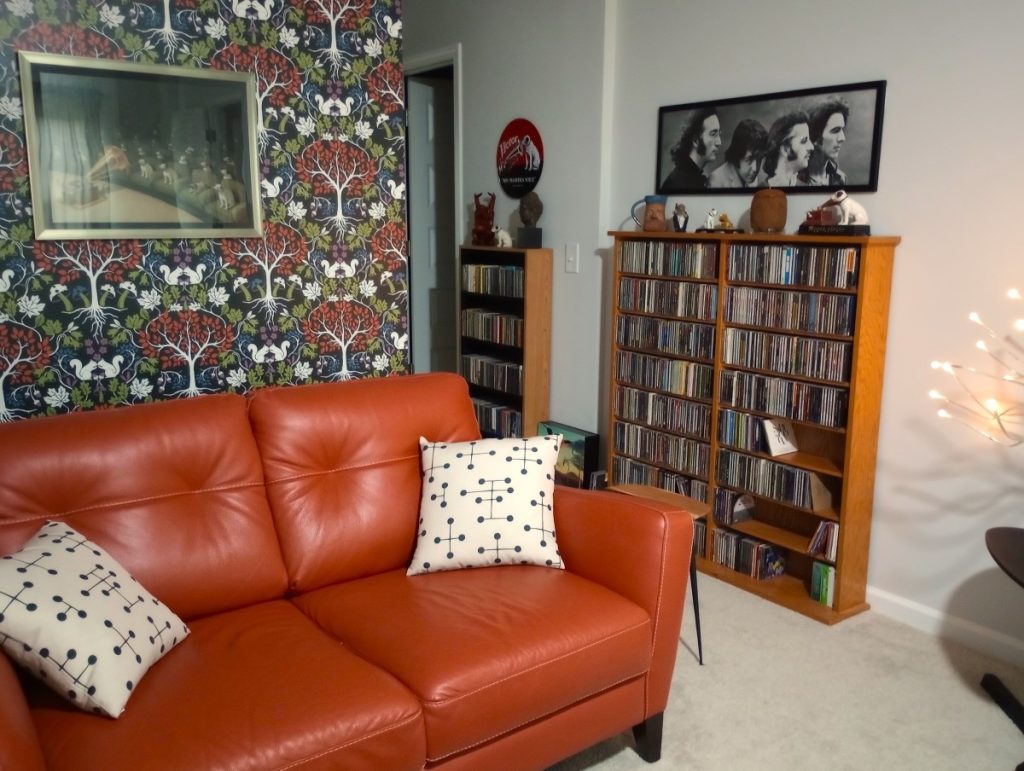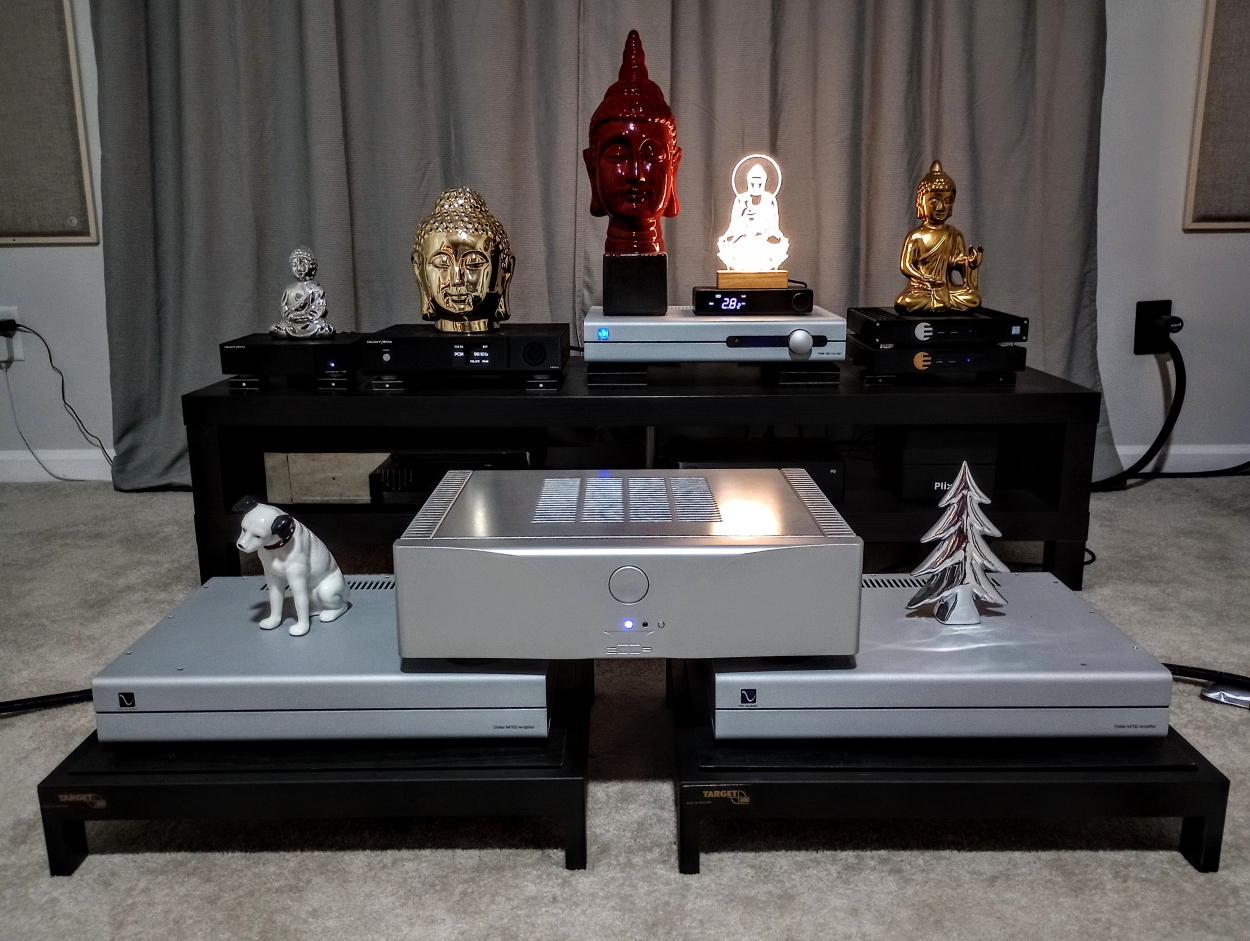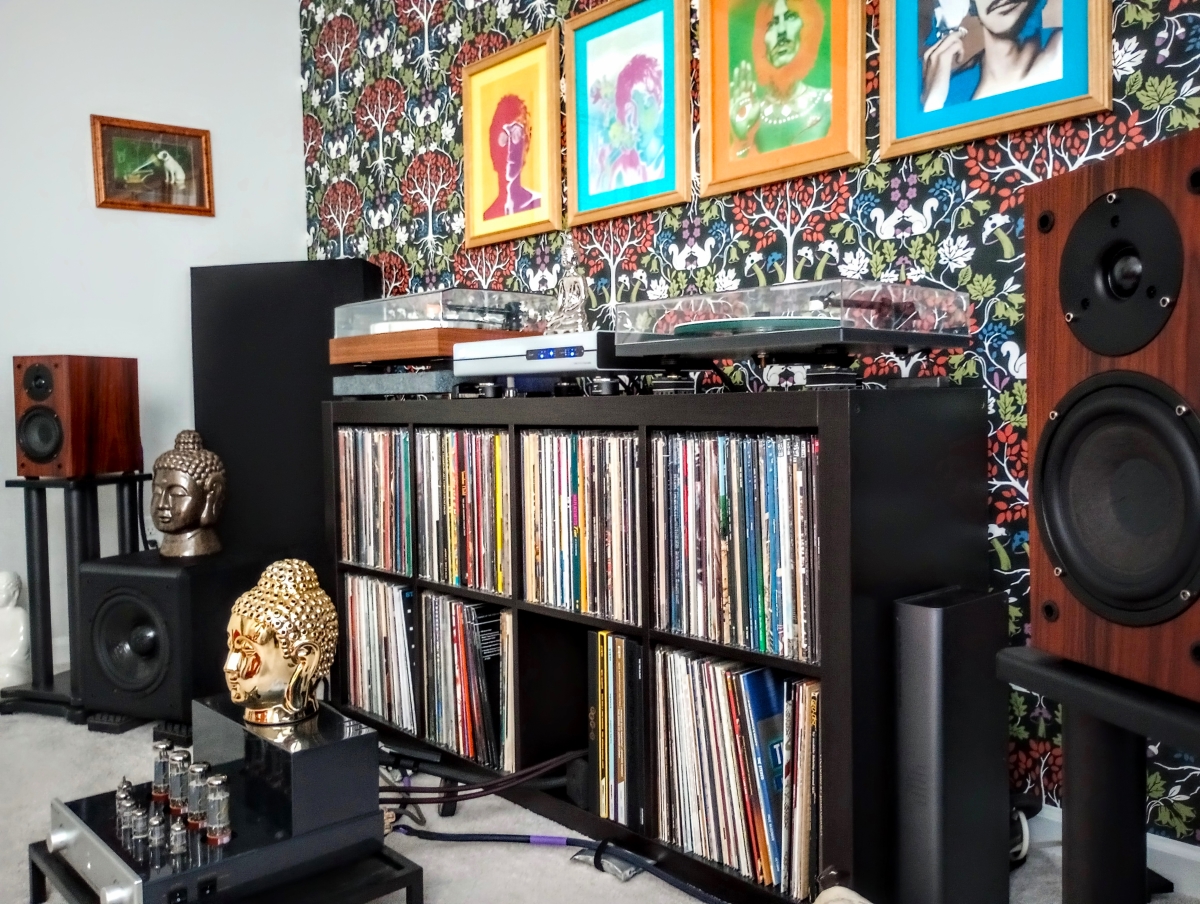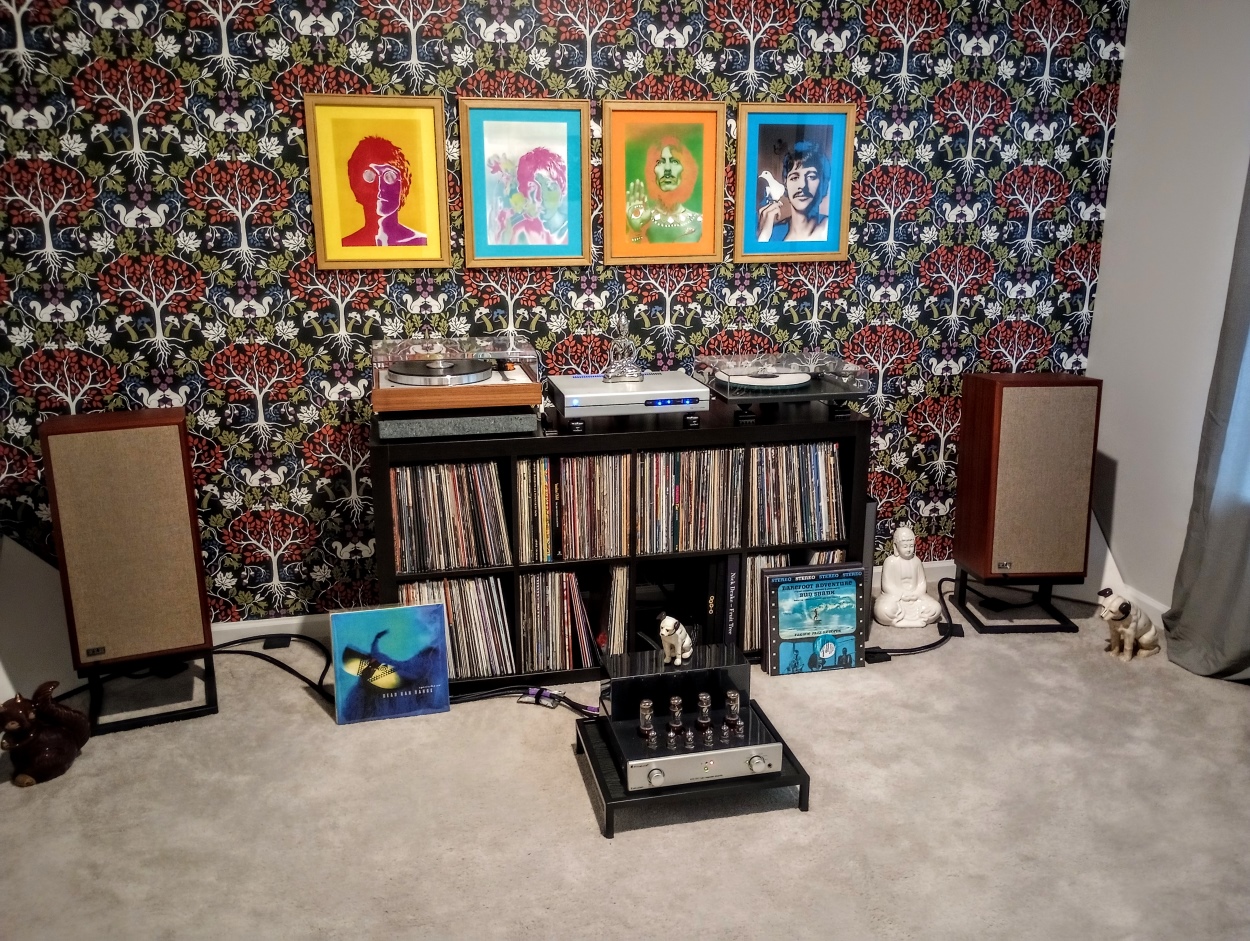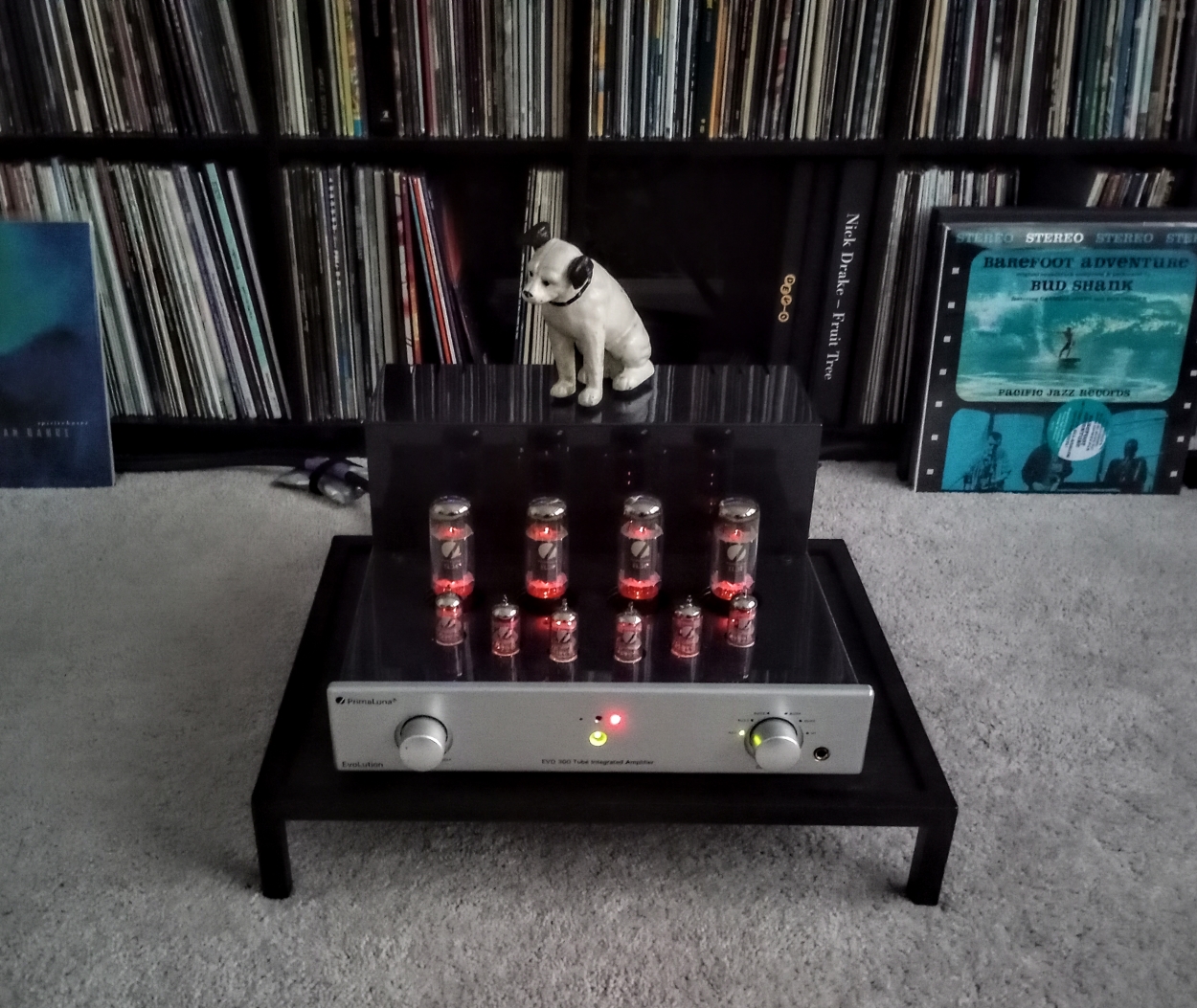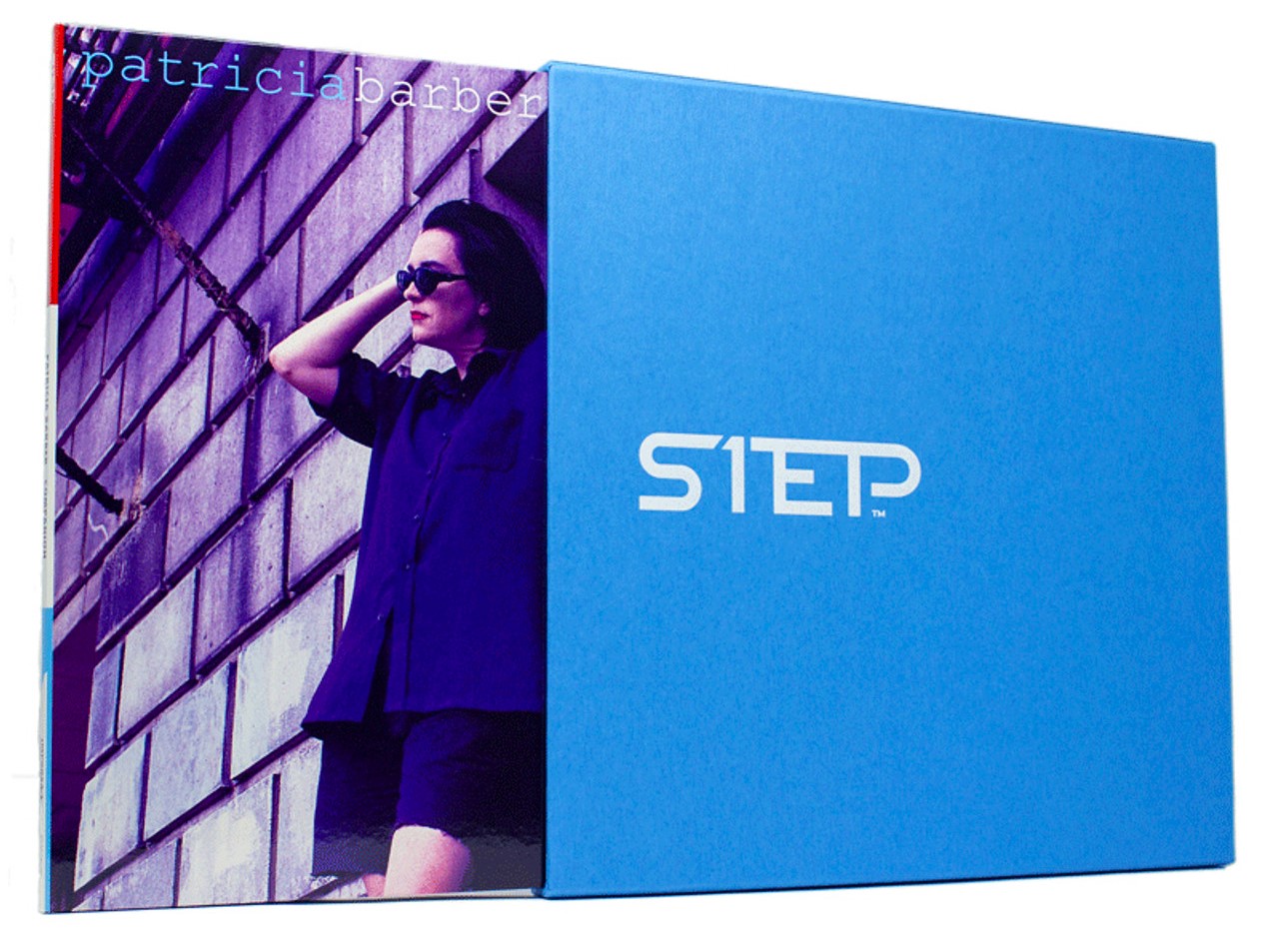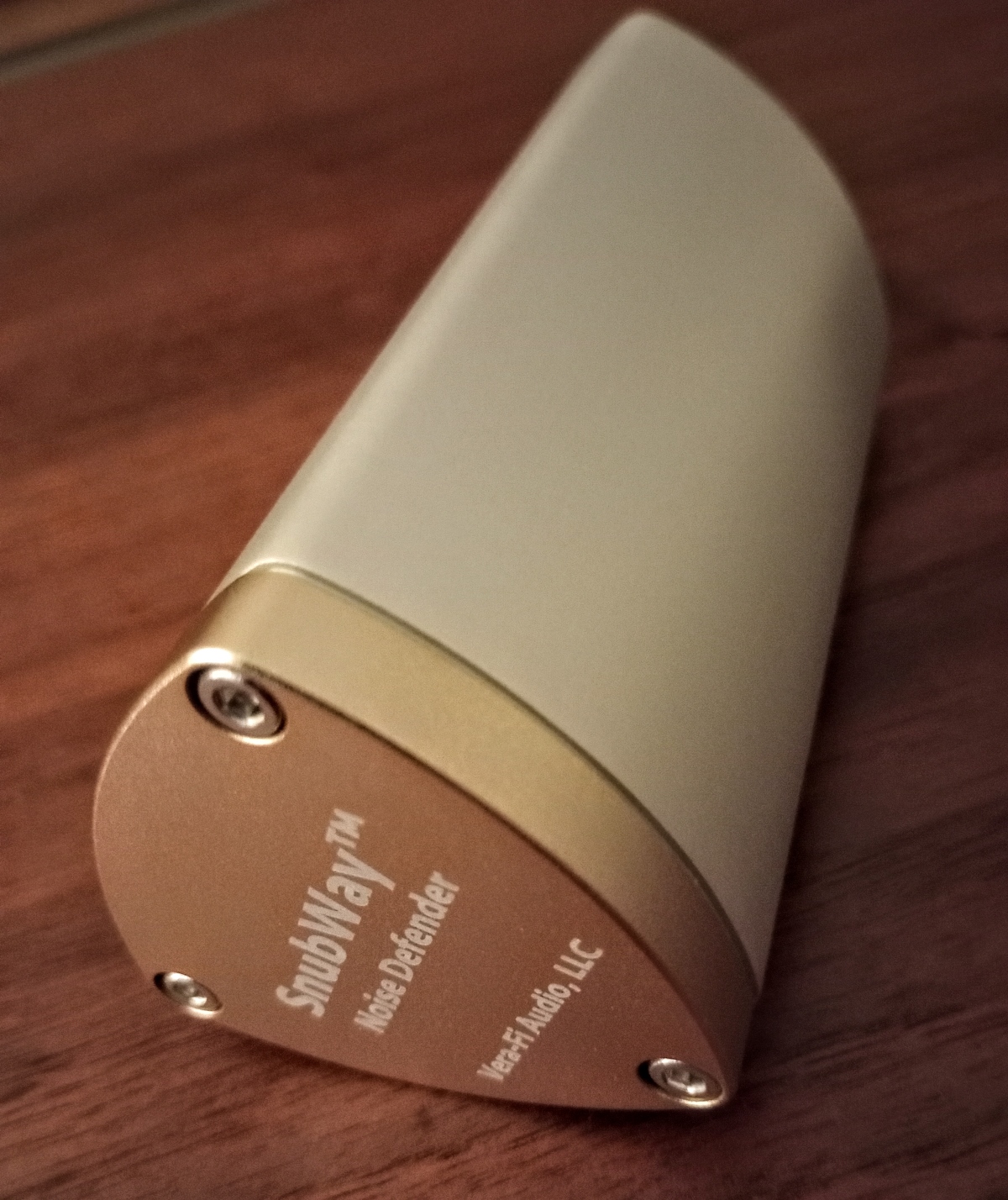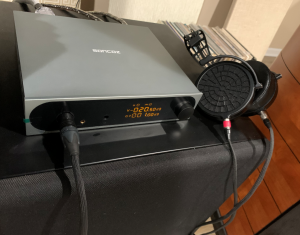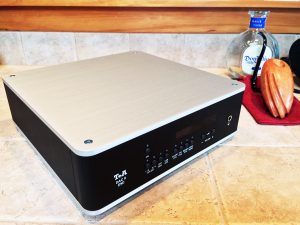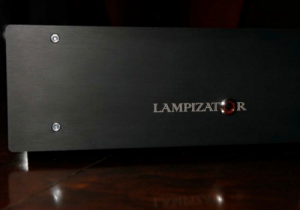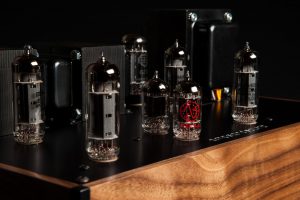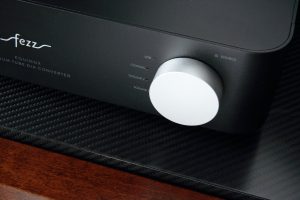Mid last year, I reviewed the Topping E70 Velvet DAC, which is a Delta-Sigma design that in my view offered astounding performance at a surprisingly low price point. Most of my love of the E70 Velvet revolved around its very cool implementation of the recent new production AKM chipsets, and its use of AKM's Velvet Sound circuit topology. Which essentially makes the E70 Velvet a 1-Bit DAC when playing native DSD files, as its unique chip configuration allows DSD signals to bypass Delta-Sigma processing. I found its sound quality to be compelling, to say the least, and gave it my highest recommendation—you can read my full review HERE. The E70 Velvet was recommended to me by Dalibor Kasac, my main contact at Euphony Audio; they build the centerpiece of my digital system, the Euphony Summus/Endpoint system. Which serves as my digital music server, music player, and streamer. Dalibor also told me that the team at Euphony was experimenting with another piece from Topping, the A90 Discrete preamplifier/headphone amplifier. And they were experiencing remarkable results with the A90 Discrete used as a preamplifier, especially in combination with the E70 Velvet.
I reached out to John Soriano, my contact at Apos Audio (Topping's US distributor), about getting an A90 Discrete review unit. There were issues getting one right away, and it didn't show up until nearly September of last year—at a point when my digital system was suddenly undergoing some significant changes. Those changes mainly revolved around long overdue upgrades to the cables in my system; the digital cables were replaced with cables from Audio Art Cable, including their Statement BNC cable between my Gustard DAC and 10MHz clock, an upgraded USB cable from Oyaide, and an upgraded i2s cable from Sommer. All balanced interconnects and loudspeaker cables were also replaced with upgraded models from Audio Art Cable. When all was said and done, the MSRP of the cable transition in my digital system was close to $4000.
Implementing the new complement of cables resulted in a marked change in the overall sound of my system over a period of just a few weeks. I heard dramatic improvements in the musicality of the system that began to blur the impressions I'd noted in my original E70 Velvet review. Which was mainly focused on the differences between the much more expensive Gustard X26 Pro DAC and C18 10MHz clock combo, which retails for close to $3100 for the pair, and Topping's E70 Velvet DAC, which retails for around $449. The Gustard combination—along with the Audio Art Cable Statement BNC digital cable ($560) that connects the DAC and clock—is priced at roughly eight times that of the E70 Velvet. It's astonishing that the inexpensive E70 Velvet can even be a part of that conversation!
The Topping A90 Discrete Arrives
The A90 Discrete retails for $599, and serves two primary functions: it's designed to be a world-class headphone amplifier, but also does double-duty as a fully balanced preamplifier. My only interest was in its function as a preamplifier, so I didn't evaluate the A90 Discrete as a headphone amp. The A90 D is a relatively diminutive unit, measuring a smallish 8.7 inches wide x 8.4 inches deep x 1.7 inches tall, and weighs 2.75 lbs. The relatively light weight of the A90 D could cause a problem for anyone using heavy or stiff cables—like me—which could easily cause the unit to tip backwards. I have the E70 Velvet DAC sitting directly on top of the A90 D, and that seems to provide enough ballast to prevent any problems with the connected Audio Art Copper Cryo balanced interconnects (two pairs) and an upgraded AudioQuest NRG-Y AC power cable. Which in combination could easily pull the A90 Discrete from it's perch.
The A90 Discrete is a very handsome piece of equipment, with nicely rounded edges on the front panel; my review unit arrived in the satin black finish, but it's also available in silver if that's your preference. The front panel features smallish display indicators for power, function (preamp and/or headphone amp), input (balanced or RCA), and there's a nicely visible alpha-numeric display that principally serves as the volume indicator. That alpha-numeric display is also used to manage the setup menu, whether using the remote or making changes directly to the unit with the multi-function volume controller knob. There's also a small indicator that shows when the A90 D is connected to an available Topping EXT90 input extender (more about that later). Along with the display functions, the front panel also features a trio of headphone outputs; there's a professionally styled 4-pin balanced XLR jack, a 4.4mm balanced jack, as well as a standard 6.35mm single-ended jack.
Rear panel connections include a pair of inputs and outputs for XLR balanced and single-ended (RCA) sources; there's also a DIN-type connector that allows for the addition of the EXT90 input extender ($249), which adds an extra RCA input, along with three additional XLR balanced inputs. The specialized cable to connect the EXT90 to the A90 D is included with the EXT90, and any power necessary for the EXT90 is derived from its connection to the A90 D. There's a USB-C input for future firmware upgrades, a 12V trigger input, and the rear panel also features a fused IEC power input that's switchable between 110 and 240Hz AC. The main power switch for the unit is beside the AC input, and there's also a sliding switch that allows you to lift the ground to the unit should you experience hum from your equipment connections.
Topping's supplied information for the A90 D has multiple columns of specifications that differ depending on which inputs and outputs you've chosen and how you're using the device, whether as a headphone amp or preamplifier. Since I'm only evaluating its effectiveness as a fully balanced preamplifier, I'll stick with those specifications. The balanced output level of the A90 D is specified as 49Vpp (Volts Peak-to-Peak); using an RMS voltage calculator, that translates into a respectable 17.3Vrms, which should drive any amplifier that exists to ear-splitting levels. Total Harmonic Distortion + Noise is rated at less than 0.00005 percent at 1kHz, while THD across the standard 20Hz-20kHz audio spectrum is rated below 0.00025 percent. The unit's rated audio spectrum extends to 20Hz-40kHz, signal-to-noise and dynamic range ratings are both 138dB, and the 1kHz crosstalk specification is -113dB. The input sensitivity is rated at 9.3Vrms at the lowest gain setting, and it drops to 3.0Vrms at the highest gain setting. Gain is rated at 5.8dB at the lowest setting, 15.3dB at the highest setting, and its output impedance is rated at 40 ohms. Overall, that's impressive performance for such a relatively inexpensive unit!
The package contains the A90 Discrete, a full-function remote, an AC power cord that matches your specified voltage preference, a 6.35mm to 3.5mm headphone adapter, an instruction leaflet, and a warranty card. The unit arrived packed very securely in Topping's standard black beauty box.
Setup of the Topping A90 Discrete
The remote that's included with the A90 D is active by default; after a recent firmware upgrade, it now allows for all the setup functions that previously required using the multi-function controller knob on the unit's face. The remote generates a strong infrared signal that works perfectly from across a fairly large room; I'd read on the web that previous Topping remotes wouldn't function from even modest distances, but I had zero issues. To enter the setup menu, you need to turn off the rear panel switch, then push the front panel controller knob while turning back on the power switch, then release the controller knob when the setup menu appears in the display.
At this point, you can use the remote control to continue programming the A90 D. Use the up/down arrows on the remote's central controller to toggle through the programming options, which include Display Brightness, Remote Control function settings, 12V Trigger settings, Volume Memory settings, and Safe Volume Mode settings. Use the left/right arrows to toggle between the options for each memory setting. The remote also allows for on-the-fly settings for Volume, Input, and Gain.
Power and mute buttons are near the top of the remote, as well as a series of lettered buttons that are marked "A," "B," "C1," and "C2." The button marked A switches between the preamplifier and headphone amplifier function, while the button marked B allows you to cycle between settings that allow customization of the preamplifier gain settings. The buttons marked C1 And C2 allow you to save and select between program presets you've created; holding down either button until the display flashes will assign your programmed settings to that button. The Gain button is for switching between three levels of gain for the headphone amplifier, and the final button on the remote also allows for dimming the display. I used all the default settings, with the exception of the dimmer display, which I set to maximum brightness. I also set the unit's variable gain to the maximum setting.
Use and listening tests
Clicking on my name in the header above will show you the components in my dual audio systems; only the equipment in my digital system was used in the evaluation of the Topping A90 Discrete preamplifier. The A90 Discrete was connected to the German-made Naiu Laboratory Ella Mark 3 power amplifier, which is capable of delivering 1 kilowatt of stereo power into a 2 ohm load. Of course, my Euphony Summus/Endpoint system streamed all the music during my evaluations. The complement of DACs included the Topping E70 Velvet, which was connected to the Euphony equipment with an Oyaide NEO D+ USB digital cable. The Gustard X26 Pro DAC and C18 Constant 10MHz clock unit were connected to each other with the Audio Art Cable Statement BNC digital cable, and were connected to the Euphony equipment with the Sommer EBH4 i2s cable.
Both DACs were connected interchangeably to the A90 Discrete with Audio Art Cable Copper Cryo XLR balanced cables; a longer length of the same cable connected the preamp with the Naiu Labs Ella amplifier. Throughout the evaluation, I frequently switched between my PS Audio Stellar Gain Cell Preamplifier and the A90 Discrete for sonic comparisons. The system is connected to a pair of Magneplanar LRS+ loudspeakers with a Vanguard Caldera subwoofer. It's a fairly elegant digital playback system that's capable of reproducing just about any genre of music at reference sound pressure levels.
Looking at my PS Audio Stellar preamplifier ($1899 MSRP) and the A90 Discrete ($599 MSRP) in a strictly by the numbers comparison, the A90 D seems capable of trouncing the much more expensive Stellar in just about every statistical category. It has infinitely lower distortion numbers, much higher signal-to-noise ratios, and it features the kind of stepped resistor array volume control that's typically only found on much more expensive preamplifiers. The Stellar's tech specs seem nowhere nearly as impressive as the A90 D, but I'm not what I'd call a "numbers first" kind of guy. And this is definitely one of those situations where two units that have very different published specifications have a surprisingly similar sonic character. The PS Audio preamp features an analog "Gain Cell" for volume control that's designed to produce the kind of sound you typically get from more esoteric designs without incorporating the use of transformers, ladder networks, or attenuators—the clarity of sound it reproduces is truly impressive at its price point.
On the same note, the Topping A90 Discrete tingled my eardrums with a level of sparkling clarity and musicality that you'd never expect from a sub-$600 preamplifier. Both units supply essentially the same voltage drive to the connected amplifier, so switching back and forth between the two is very much apples-to-apples. I had no overriding preference between the two in terms of the sound quality they offered, but ultimately gave the nod to the much more expensive Stellar Gain Cell preamplifier. I also felt the Stellar preamplifier had a greater level of functionality than the A90 D, and boasts a wider range of connectivity options. What I am shocked by is that a sub-$600 preamplifier can go toe-to-toe with one three times its price, and provide a level of musically detailed, compelling sound that's nearly on par with the much more expensive device. That part is simply remarkable!
At the point when I originally reviewed the Topping E70 Velvet DAC, I now believe that despite my positive impressions, those conclusions were somewhat veiled by the cables that then connected the equipment in my digital system. Especially the interconnect and digital cables, which I feel were providing considerably less than transparent sound to my ears. Don't get me wrong, the E70 Velvet is still a knockout DAC, especially at its $449 price point—but the cables in my system at the time of that review didn't allow me to fully hear the entire picture, especially with regard to what an i2s connection with a great cable was truly capable of. Prior to that review, I was convinced that i2s was a superior digital connection; afterwards, not so much. I now have reaffirmed my position on i2s—it's undeniably the premier digital connection, provided that one has the correct cables in place that will allow the superiority of the i2s connection to shine through¹. And the A90 Discrete definitely allows that level of transparency to shine brightly!
A music track that's become one of my go-to references for exceptionally good recorded sound is the tune "Company," that comes from jazz pianist and singer Patricia Barber's classic 1998 album Modern Cool. The version that I've become greatly enamored with in recent weeks is taken from Native DSD Music's new DSD 512 transfer, which is offered in perhaps the finest sound quality this album has ever experienced. The track features a quartet setting, where Mark Walker's thunderous, propulsive drumbeat opens the track; Patricia Barber's smoky/sweet alto voice speaks/sings the vocal entry over the drums, as Michael Arnopol's subterranean bass underpins the goings-on. As the song continues, Dave Douglas' trumpet punctuates the proceedings; this is maybe the most dynamic jazz recording on my entire music server, especially in its new DSD 512 guise. Played via the USB connection to the Topping E70 Velvet, the sound of this rhythmically dynamic track literally bursts from the soundstage through the A90 Discrete! But then switching to the Gustard combo via i2s offered the same level of unrestrained dynamics, but with perhaps a touch more overall transparency. The A90 Discrete delivered both flavors of digital with the kind of clarity that allows you to easily hear very slight differences between the digital sources.
Dalibor Kasac absolutely raved to me about the sound quality he was getting from the A90 Discrete, and I can't disagree with him. Through the i2s connected Gustard equipment, as well as the USB-connected E70 Velvet, the A90 Discrete presented music from every file type and bit-rate with a level of believable realism that shouldn't be possible at the under-$600 price point. I can definitely agree with Dalibor and the Euphony team on that!
Final Thoughts
The only real criticism I could level at the A90 D was that its presentation of the very top-end of the treble spectrum showed an ever-so-slight touch of brightness, and with just a trace of sibilance. This was true regardless of the digital source. Listening to the same source material with the Stellar preamplifier showed no noticeable accentuation of the treble range; it had an overall smoother and more natural presentation. Of course, again, the Stellar sells for three times the price of the A90 D, so it's totally expected that the much higher-priced PS Audio unit would perform with a greater level of liquidity and musical accuracy. Playback at identical output levels at first made the Stellar seem perhaps a tad dull in comparison to the A90 D, which I said earlier seemed to "shine very brightly." With extended listening, it became apparent that the Stellar was more tonally accurate; the quasi-ribbon tweeters of my Magneplanar loudspeakers tend to project a sound that borders on brightness, and the A90 Discrete only amplified that very slightly etched sensation. It probably, ultimately comes down to system matching, and perhaps pairing the A90 D with loudspeakers with a more relaxed treble presentation would offer more symbiotic results tonally.
One of the most desirable traits of any high-end preamplifier is for the unit to completely disappear during playback. Many preamplifiers are noted for possessing a particular "sonic signature," but the very best simply get out of the way, presenting the music with credible levels of realism and fidelity that will capture your imagination. The Topping A90 Discrete virtually disappeared, imparting only the very slightest sonic character to the music I played. That it was nearly otherwise sonically indistinguishable from the much more expensive PS Audio Stellar spoke volumes to me, and again, the A90 D sells for one-third its price! The A90 Discrete is a top-notch performer, and my assessment of its overall level of excellence comes from only exploring half of its functionality.
Now I need to dig into how it acquits itself as a headphone amplifier! The Topping A90 Discrete preamplifier is an incredible bargain, and comes very highly recommended. If I were trying to put together a world-class audio system on a shoestring budget with careful system matching, I'd give this overachieving preamplifier my strongest consideration.
Topping A90 Discrete Preamplifier/Headphone Amplifier
Retail: $599 MSRP
Apos Audio
Topping
All images courtesy of Topping, Apos Audio, and the author
¹ I still feel that the USB connection—which has become the nearly universal choice for DACs and streamers—is a very good one, but can't ultimately compete with the transparency and clarity of i2s. I'd love to hear a Topping DAC that features the same complement of AKM Velvet Sound chips as the E70 Velvet, but also with an available i2s input to make a more comprehensive evaluation a possibility. Despite my misgivings about ESS Pro chipsets, when heard in a proper i2s implementation with correct cabling, they're capable of providing sound that's on par with the current production AKM chipsets. In my evaluation, and in the setup with the new cables, the differences in sound were infinitesimal. But I still have to give the overall edge to the Gustard combo and its i2s connection. This is something that needs additional exploration to reach a final determination as to which actually sounds better.




